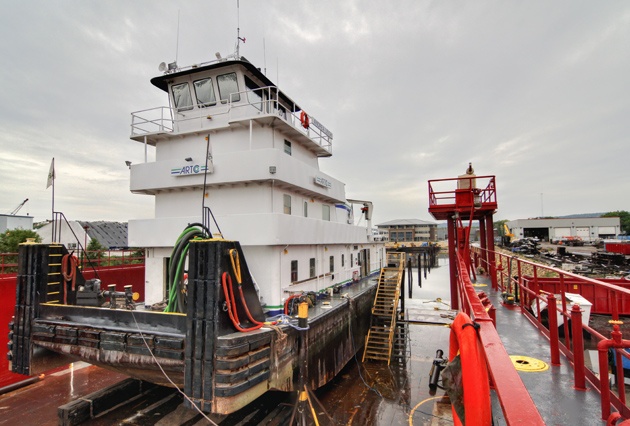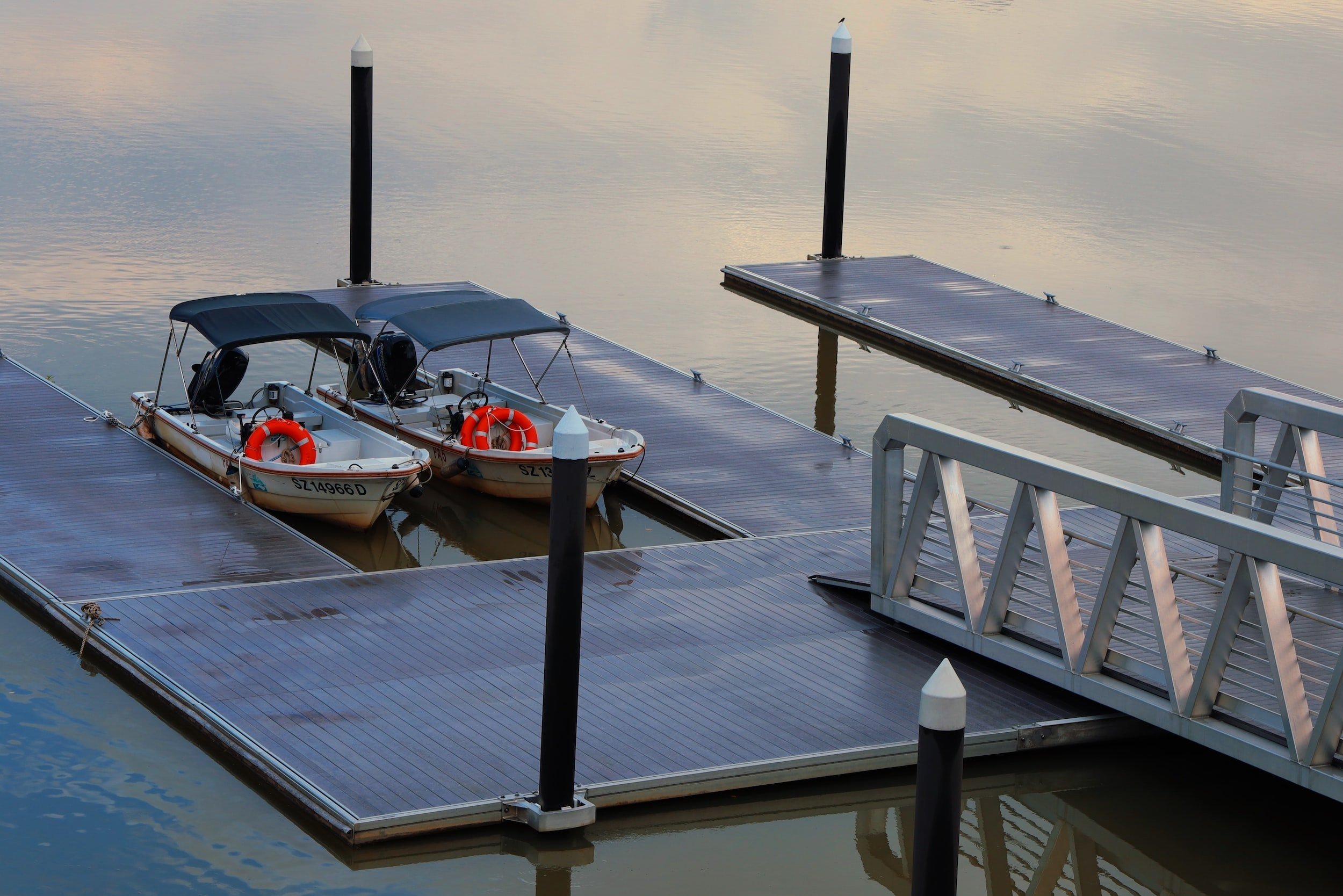Efficient Dock Repair Service Techniques: Making Sure Architectural Stability
Making sure the architectural stability of anchors via reliable fixing strategies is vital for the durability and security of marine facilities. This includes a multi-faceted strategy starting with comprehensive assessments using advanced technologies like finder tools and from another location operated vehicles (ROVs) to discover both visible and hid problems. Consequently, selecting the best repair service materials, such as composite products and corrosion-resistant alloys, is critical for durability. Architectural support techniques, including the implementation of cross-bracing systems and load-distribution plates, play an essential function in mitigating tension factors. Nonetheless, the relevance of these techniques comes to be obvious when checking out advanced fixing techniques and preventative maintenance methods.
Analyzing Dock Damage
Analyzing dock damage is a vital initial step in making sure the architectural stability and safety and security of any docking center. This initial assessment involves a detailed examination to identify both hidden and visible problems. Key facets to check out consist of the dock's structure, pilings, decking, and equipment. Each component must be looked at for signs of wear, rot, deterioration, or other forms of destruction that could compromise the structural integrity.
Structural designers or certified assessors typically perform these assessments using specialized methods and tools. Underwater evaluations might employ sonar tools or from another location operated cars (ROVs) to find immersed damage. Over water, aesthetic examinations are matched by utilizing moisture meters and various other analysis devices to uncover underlying issues not quickly noticeable to the naked eye.

Picking Repair Work Products
Selecting the appropriate repair work materials is a crucial action in the dock restoration process, one that straight affects the durability and performance of the repaired structure. Material choice need to be driven by variables such as environmental conditions, load-bearing demands, and compatibility with existing dock components. As an example, timber is a traditional option for anchors because of its all-natural durability and aesthetic appeal. Nevertheless, selecting the best sort of wood, such as pressure-treated lumber or normally rot-resistant varieties like cedar or teak, is important to stand up to water atmospheres.
Along with wood, composite materials are increasingly preferred because of their durability and low maintenance needs. Compounds, normally made from a mix of plastic and wood fibers, use excellent resistance to rot, insects, and UV damage. For metal docks, selecting corrosion-resistant alloys such as galvanized steel or marine-grade light weight aluminum is necessary to stop corrosion and guarantee architectural stability in saline water conditions.
Epoxy resins and marine-grade sealers are vital for fixing splits and securing joints, providing a water resistant barrier and improving the dock's general strength. By meticulously picking top quality materials, dock fixings can achieve long-lasting results, thereby protecting versus future degradation and making certain secure, reputable usage.
Structural Reinforcement Methods
Efficient structural reinforcement methods are essential in making certain the security and long life of dock repairs. One essential approach involves using steel or composite support bars (rebar) within concrete frameworks. Rebar offers extra tensile strength, preventing fractures and distributing loads much more uniformly. This technique is especially reliable for docks exposed to hefty lots or extreme environmental conditions.
One more vital method is the application of fiber-reinforced polymers (FRP) These materials supply high strength-to-weight ratios and outstanding resistance to deterioration, making them optimal for enhancing concrete or wooden docks. FRP can be used in strips or sheets and bonded with epoxy resins to improve structural honesty.
Bracing and securing systems also play an important role in structural support. Cross-bracing, utilizing metal or wooden beams, look here can combat lateral forces, decreasing swaying and activity. Securing systems, such as helical piers or driven heaps, offer a steady foundation by moving loads to much deeper, more secure soil layers.
Finally, the assimilation of load-distribution plates can assist distribute weight a lot more evenly across the dock's surface area, alleviating local stress and anxiety points. These techniques jointly guarantee that anchors remain robust and risk-free, with the ability of enduring the roughness of their operational setting.
Advanced Repair Work Approaches

Another advanced strategy involves undersea welding, which permits for fixings to be conducted without the requirement to dewater the area. This method is specifically advantageous for resolving architectural issues in immersed dock elements, making sure very little disruption to operations. Boosted welding techniques, combined with robotic systems, deliver precision and reliability, thereby extending the lifespan of the dock.
Furthermore, cathodic protection systems are applied to avoid rust in metallic dock structures. By utilizing sacrificial anodes or satisfied existing systems, these strategies effectively reduce the electrochemical procedures that cause product deterioration.
Last but not least, progressed surveillance modern technologies, such as structural health tracking (SHM) systems, offer real-time data on the problem of dock structures. These systems allow proactive maintenance and prompt treatments, ultimately ensuring the long-term architectural honesty of the dock.
Upkeep and Prevention
Maintenance and avoidance are basic principles that underpin the longevity and safety of dock structures. Regular assessments are paramount, enabling very early discovery of deterioration, potential weaknesses, and environmental influences. A positive approach, involving regular checks for rust, rot, and architectural changes, reduces expensive fixings and extends the dock's functional life.
Preventive procedures must consist of using protective coatings to steel elements to defend against corrosion and making use of treated timber to withstand degeneration. Furthermore, making certain appropriate water drainage and ventilation can stop water accumulation, which is a typical root cause of structural deterioration. Incorporating quality materials and adhering to supplier standards throughout building and repair stages also play critical duties in boosting durability.

Educating personnel in dock upkeep best methods makes certain regular application of safety nets. Leveraging technical advancements, such as drones for assessments and sensing units for real-time monitoring, can even more enhance maintenance initiatives. By prioritizing upkeep and avoidance, dock proprietors can guarantee architectural integrity, functional security, and cost-effective monitoring over the dock's life expectancy.
Conclusion
Finally, preserving the architectural integrity of aquatic facilities demands comprehensive dock fixing methods. Detailed evaluations utilizing innovative devices discover both visible and concealed problems, while the choice of proper repair materials enhances longevity. Executing architectural support methods addresses stress points successfully. Advanced repair strategies, coupled with routine maintenance practices, ensure the dock remains functional and safe under diverse environmental conditions. Taking on these approaches significantly prolongs the life-span and performance of aquatic facilities.
Making sure the architectural stability of anchors through efficient repair work techniques is vital for the long life and safety and security of aquatic centers.Selecting the suitable fixing products is a pivotal step check out this site in the dock restoration process, one that directly influences the longevity and performance of the repaired structure.Reliable architectural support strategies are vital in making sure the security and longevity of dock repairs. By focusing on maintenance and prevention, dock owners can ensure structural honesty, functional safety, and cost-effective management over the dock's life expectancy.
In final thought, keeping the architectural honesty of aquatic facilities requires detailed dock repair work techniques.